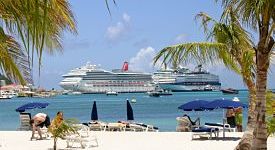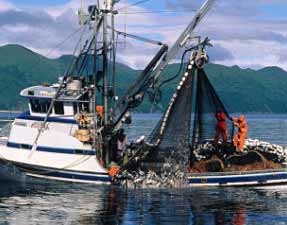Alaska Salmon Enhancement
Interview with Lon Garrison, operations manager with the Northern Southeast Regional Aquaculture Association, Inc., which has conducted salmon enhancement projects throughout northern southeast Alaska since 1978. The association website is www.nsraa.org.
What is the NSRAA?
We are a private, nonprofit regional aquaculture association formed by a community of salmon fishermen back in the late 1970’s with the goal of enhancing and providing salmon opportunities in southeast Alaska. At our creation, the drive was to reverse the decline in the local salmon fisheries. To date, our efforts have been extremely successful. We are involved with a range of projects, from determining hatchery and fish dock locations to operating two large salmon hatcheries.
What careers positions does the NSRAA employ?
When looking for people to fill positions, we typically look for someone with a biology degree, someone who as studied aquaculture or an applicant with aquaculture experience. We have fish culturists, hatchery managers and maintenance personnel. The maintenance experience is very important because our facilities are on the coast, so we’re on the saltwater quite a bit. A person who is a jack-of-all-trades, who is able to run a boat, tie a knot and is familiar with power tools is extremely valuable. Some of our best employees have an agricultural background and have experience in the practical side of things.
What aquaculture educational programs are present in Alaska and the rest of the United States?
There are a few programs developed in Alaska.
There has been an associate degree program in aquaculture at the University of Alaska Southeast for awhile and they are working on providing a Bachelor of Arts and Bachelor of Science program. It would give real hands on education in fisheries and fish management. A number of our people come from Oregon State University, Colorado State University, the University of Washington and the University of Idaho. The southeast United States has dedicated aquaculture programs, like at the University of Auburn, because that region has significant catfish aquaculture.
What current and future issues are present for the NSRAA?
Each year brings similar and new challenges. Our normal challenges include issues with water supply or fungus problems. Marine survival, while always an issue, has changed in its nature over the years. We call it ocean ranching, where we rear chum salmon for 60 days, release them in rivers and then they head to the sea with the wild populations. They come back to the spot where they were released, but our marine survival is fairly low and we don’t necessarily know why. We know that they’re seeing increasing predation pressure from sources like the humpback whale population, so we try to come up with strategies to avoid those scenarios. We also have to deal with changing ocean conditions, like global warming and ocean acidification, that we haven’t had to in the past.
What does the employment scene look like for aquaculturists?
At the NSRAA, we haven’t see much turnover, but we always seem to have a few entry-level positions come open each year. Most of our employees begin as a twelve-month or less position and then hire on in a full time position when available. Most of these positions run from February through November, when we are busy with rearing season or the adult salmon are returning. Many of our positions require working in remote hatchery locations, although remote doesn’t mean what it used to. It used to be that the only way to communicate form these remote spots was through the VHF marine operator, but now most of our locations have satellite internet and television and cell phone service.


 Teach English in Asia
Teach English in Asia  Cruise Ship Jobs
Cruise Ship Jobs  Alaska Fishing Industry Jobs
Alaska Fishing Industry Jobs  Sharing Economy / Gig Economy
Sharing Economy / Gig Economy 
